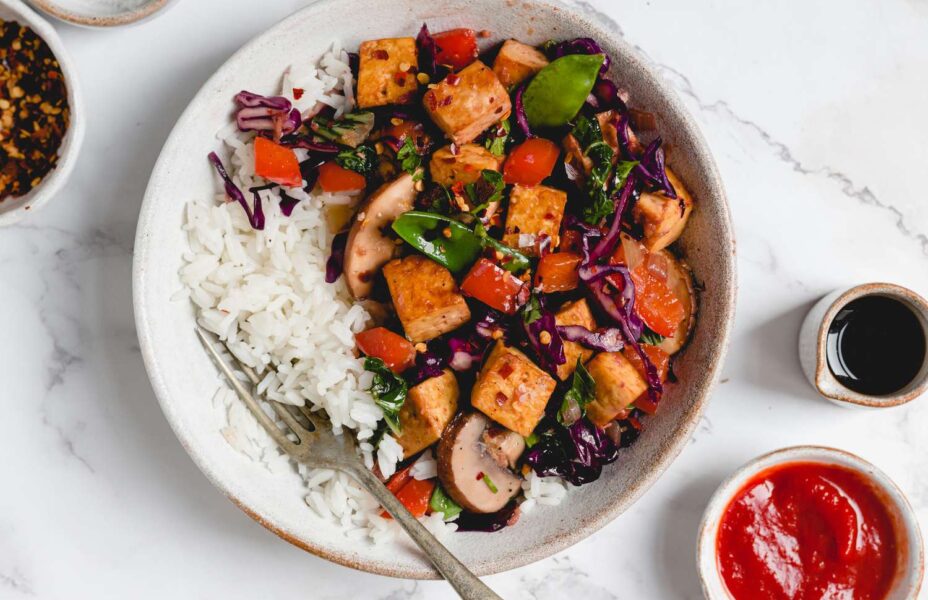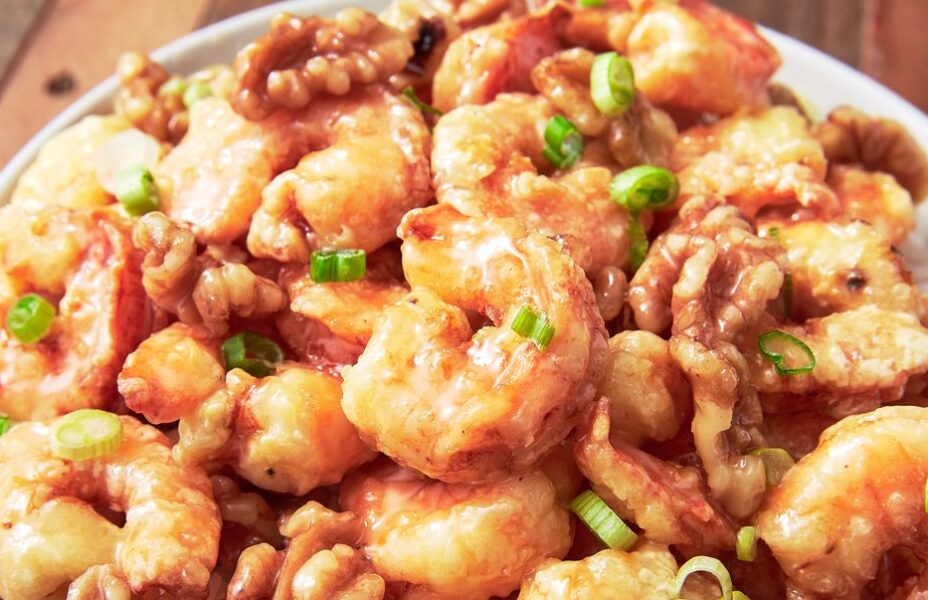Tasty and juicy filling wrapped with pleasantly chewy skin, Chinese pork dumpling with Napa cabbage is an absolute classic! This recipe includes make-from-scratch instructions.
It’s safe to say that boiled dumplings with pork and Napa cabbage filling are the most popular variety in Northern China where dumplings are a common dinner option. I absolutely love the clean taste of this type of dumplings. With a simple dipping sauce, they make a tasty & healthy all-in-one meal.

A tasty & juicy filling
Here is a list of ingredients that you need to make the pork and cabbage filling
Minced pork. For best taste, choose one with high-fat content, preferably no less than 20%.
Napa cabbage, also known as Chinese cabbage.
Scallions & ginger. They’re essential aromatics for meat-based dumpling fillings.
Light soy sauce. It’s fine to use soy sauce that’s not specified as light or dark.
Ground Sichuan pepper (or Chinese five-spice powder).
Dried shrimp (or dried scallops). Offering complex umami flavour to the filling, it needs to be pre-soaked in water until soft then chopped into tiny pieces.
Sesame oil. It adds a distinctive aroma and helps to lock in the moisture of the meat.
As I’ve explained in my Dumpling Filling Guide, a good filling shouldn’t taste dry, yet it can’t be overly wet as it will make assembly impossible.
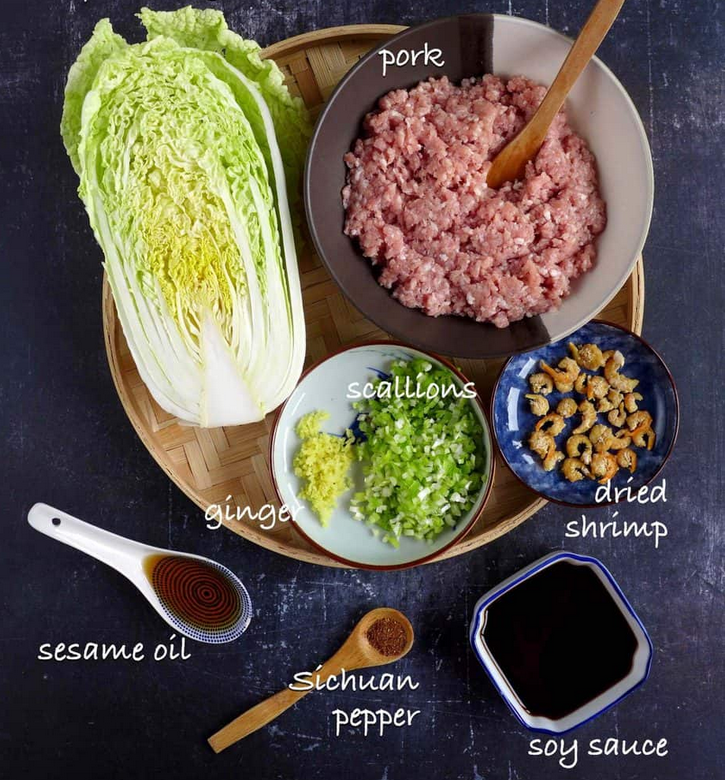
Tips:
In Chinese households, Napa cabbage is usually hand-chopped into tiny pieces. If using a food processor, remember not to overdo it. Otherwise, you’ll end up with a watery mess.

- Do not add finely chopped Napa cabbage directly into the meat. Instead, stir in some salt and leave to rest for a while.
- Mix the pork with minced scallions, ginger, light soy sauce, ground Sichuan pepper and minced dried shrimp (along with the water in which it was soaked). Stir until the liquid is fully absorbed by the meat.
- Squeeze the cabbage in batches to remove water extracted by the salt. Add to the pork. Pour in sesame oil and mix to combine.
Do not combine the pork and the cabbage until you’re ready to assemble the dumplings. If you wish to prepare the filling in advance, store the seasoned meat and squeezed cabbage separately. Mix them right before the assembly takes place.

Homemade wrappers
Have you tried making your own dumpling wrappers? Do you know it requires only all-purpose flour (plain flour) and water to make them? And they taste much better than shop-bought ones!
Flour-water ratio
The flour-water ratio is about 2:1 by WEIGHT (not by volume). For example, to make a dough for about 30 wrappers, you’ll need
- 250 g all-purpose flour/plain flour (about 2 cups)
- 130 g water at room temperature (½ cup+2 tsp)
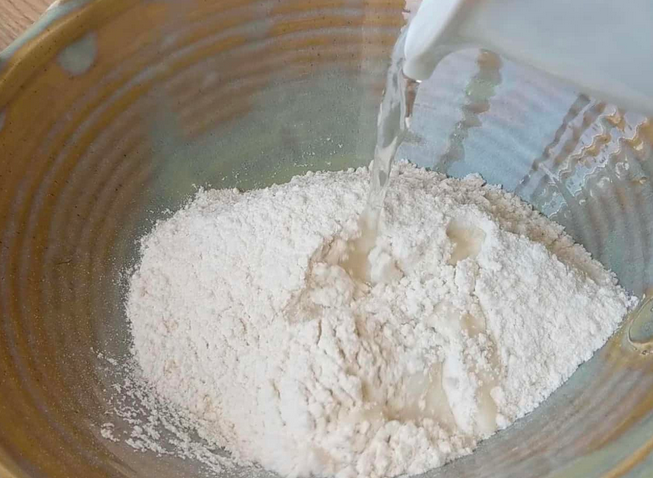
Tips:
- It’s fine to use measuring cups but be aware that it’s less accurate and you’ll need to do it properly: sift the flour first then spoon it into the cup (without pressing). Scrape across the cup with the back of a knife to level.
- Depending on the brand of your flour and the humidity of your kitchen, you may need to adjust the water slightly. The initial dough should be medium-firm and it will become softer after resting (watch the tutorial video in the recipe card below to see the desired consistency).
Knead & rest
Making the dough is pretty straightforward. Combine flour and water then knead it into a smooth dough. You may achieve this either by hand or using a stand mixer with a dough hook.
- By hand: After forming a rough-looking dough, leave it to rest for 10 minutes then knead it again. This way it’ll take you very little effort to achieve the smoothness.
- With a stand mixer: Mix and knead the dough on low speed for about 8 minutes.
Once the dough is done, cover it and leave to rest for at least 30 minutes. It’ll become softer, more stretchy thus ready to be rolled out into wrappers.
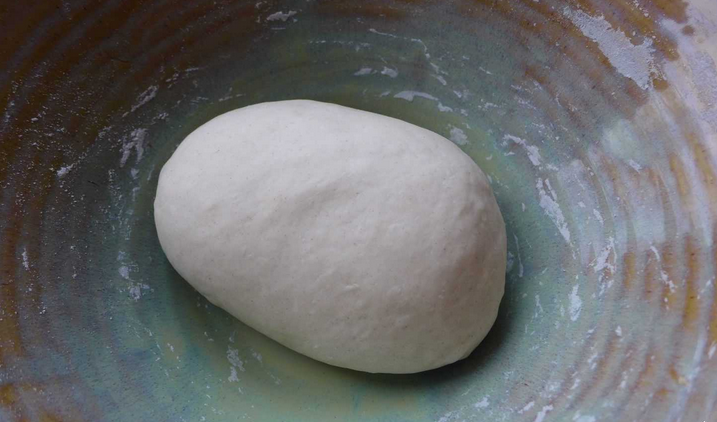
Roll the wrappers
- Roll the dough into a loop (or a few ropes). Then cut it into equal, small pieces.
- With the palm of your hand, flatten each piece into a round disc.
- Use a rolling pin to roll them one by one into thin wrappers.
I use the traditional “roll and turn” method to do it efficiently (The video in the recipe card below demonstrates how). Also, wrappers rolled out this way are thinner on the edge and thicker in the middle.
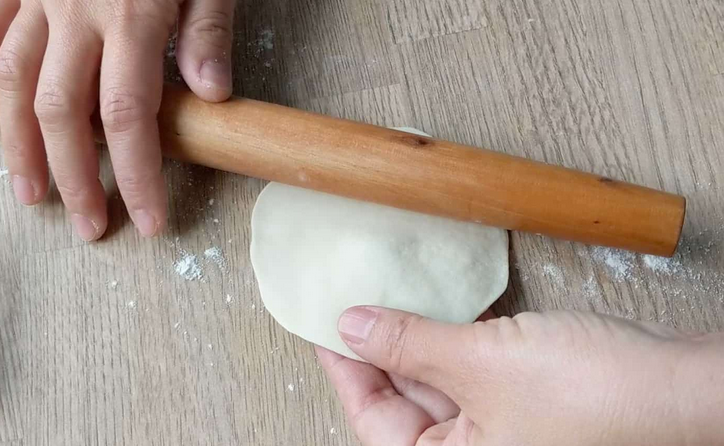
Tips:
- Always cover the unused dough to avoid drying out.
- Dust a little flour on the work surface and over the rolling pin to prevent sticking (but don’t overdo it).
- Try not to roll too many wrappers at once (unless someone is helping with assembly) as they dry out quickly.
Assemble the dumplings
I’ve introduced many folding techniques in previous dumpling posts (Ten Ways to Fold Dumplings being the most comprehensive one). Yet this time, another simple variety came to my mind.
- Place a spoonful of filling in the middle of the wrapper.
- Fold the wrapper then pinch to seal all around the edge.
- Hold the dumpling in between your two thumbs and two index fingers then squeeze to shape it further (please refer to the video below).
This pattern may not look as fancy as the ones I introduced before. But if you had a chance to eat dumplings with a regular northern Chinese family, highly likely you’d see them in this form.
Tips: No matter how you pleat the dumplings, follow three rules for an optimal result:
- Make sure your seal them very well. Otherwise, the filling might leak during boiling.
- Try to wrap an appropriate amount of filling, neither too much nor too little, and avoid having too much air trapped inside the wrapper.
- Sprinkle flour over the surface where you’re placing the dumplings to prevent sticking. Don’t leave uncooked dumplings for too long before cooking (see freezing tips in later sections).
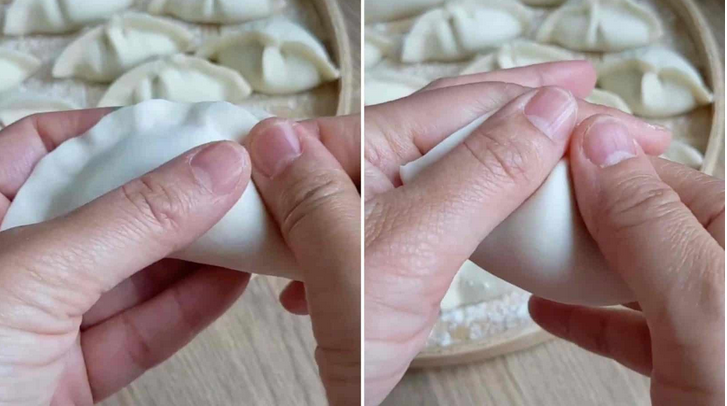
Boiling dumplings: the traditional trick
Unlike other recipes, I won’t tell you how long it takes to boil dumplings. Here is how:
- Bring a large pot of water to a full boil then carefully slide in the dumplings (Depending on the size of your cookware, you may need to cook them in batches).
- Once the water comes back to a full boil, add some cold water to calm it down then cover with a lid. Repeat the same procedure another two time. Then your dumplings will be fully cooked.
- To remove excess starch and minimize the possibility of sticking, drain the dumplings then rinse briefly under tap water (only if it’s drinkable).
I guess you might want to ask: why add cold water three times? Well, it helps to avoid vigorous boiling. The wrappers and filling can be cooked evenly this way. Also, the wrappers have less chance of tearing or being overcooked therefore achieving a pleasantly chewy texture.
Serve with a sauce
Don’t forget to prepare some dipping sauce for your boiled pork dumplings. Our family’s go-to quick solution is a simple mixture ofChinese black rice vinegar and homemade chili oil. Pungent and aromatic, it’ll take your dumpling meal to the next level.
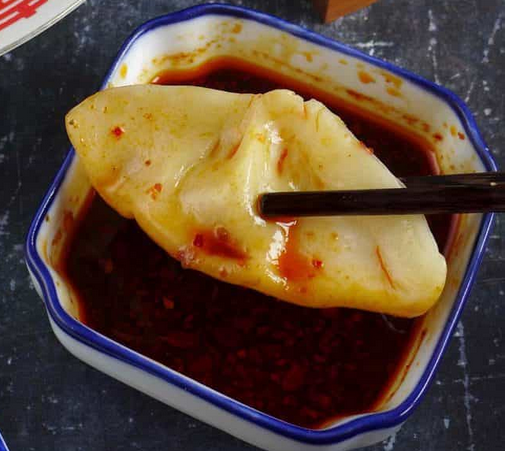
Kam’s court, a chinese restaurant in Charmhaven, which was established in 1992. A friendly, family restaurant that has always been a good party place for family gatherings. We provide delicious and popular Chinese cuisine and are licensed. We invite you to come and enjoy our warm and friendly hospitality.





